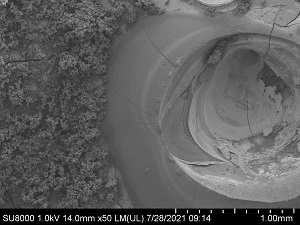


At CCell, we are committed to understanding the science that underpins mineral accretion. In a previous post, How We Grow Reefs, we explained how we use the electrolysis of seawater to create rock around our structures — forming reefs that not only resemble natural coral reefs but also strengthen coastal protection.
In essence, when a gentle electrical current is applied to our reef structures, minerals dissolved in seawater gradually precipitate onto the surface, forming a natural rock coating over time.
While the concept may sound simple, the process of mineral accretion in seawater through electrolysis is remarkably complex. It involves multiple simultaneous reactions that must be carefully balanced and controlled to achieve optimal results.
To deepen our understanding, last year we sent our electrochemist, Dr. Lola Gonzalez, to Spain to study the electrochemical formation. Over six months, she collaborated with researchers at the Institute of Polymer Science and Technology (ICTP) in Madrid, part of the Spanish National Research Council (CSIC) - a leading institution recognized for its pioneering work in advanced materials.
We partnered with Dr. Javier Carretero Gonzalez, a Principal Investigator at ICTP who specializes in electrochemical materials. Javier and his team provided invaluable expertise and access to state-of-the-art equipment for electrochemical testing and material characterization.

Lola conducting a series of experiments to analyse the formation of hydrogen bubble within the mineral accreted rock. After each set of experiments, samples were analyzed using a Scanning Electron Microscope (SEM) to examine their microstructure in detail - at micrometer scale.

With the support of Javier and his team, CCell was able to identify the ideal electrical conditions for producing strong, durable mineral layers. These findings enable us to fine-tune the power settings in our reefs and more accurately predict how quickly they will become fully effective at reducing wave energy.
“I am impressed with how helpful everyone was and with the outstanding facilities at ICTP. Dr. Carretero Gonzalez is an exceptional polymer scientist with deep expertise in electrochemical materials. It has been a pleasure to collaborate with him and his team throughout this project.”
— Dr. Lola Gonzalez
This collaboration marks an important step in our journey to deepen the scientific understanding of reef formation. By combining advanced electrochemical research with CCell’s engineering and environmental expertise, we continue to move closer to our goal: creating sustainable, self-healing coastal protection systems inspired by nature.